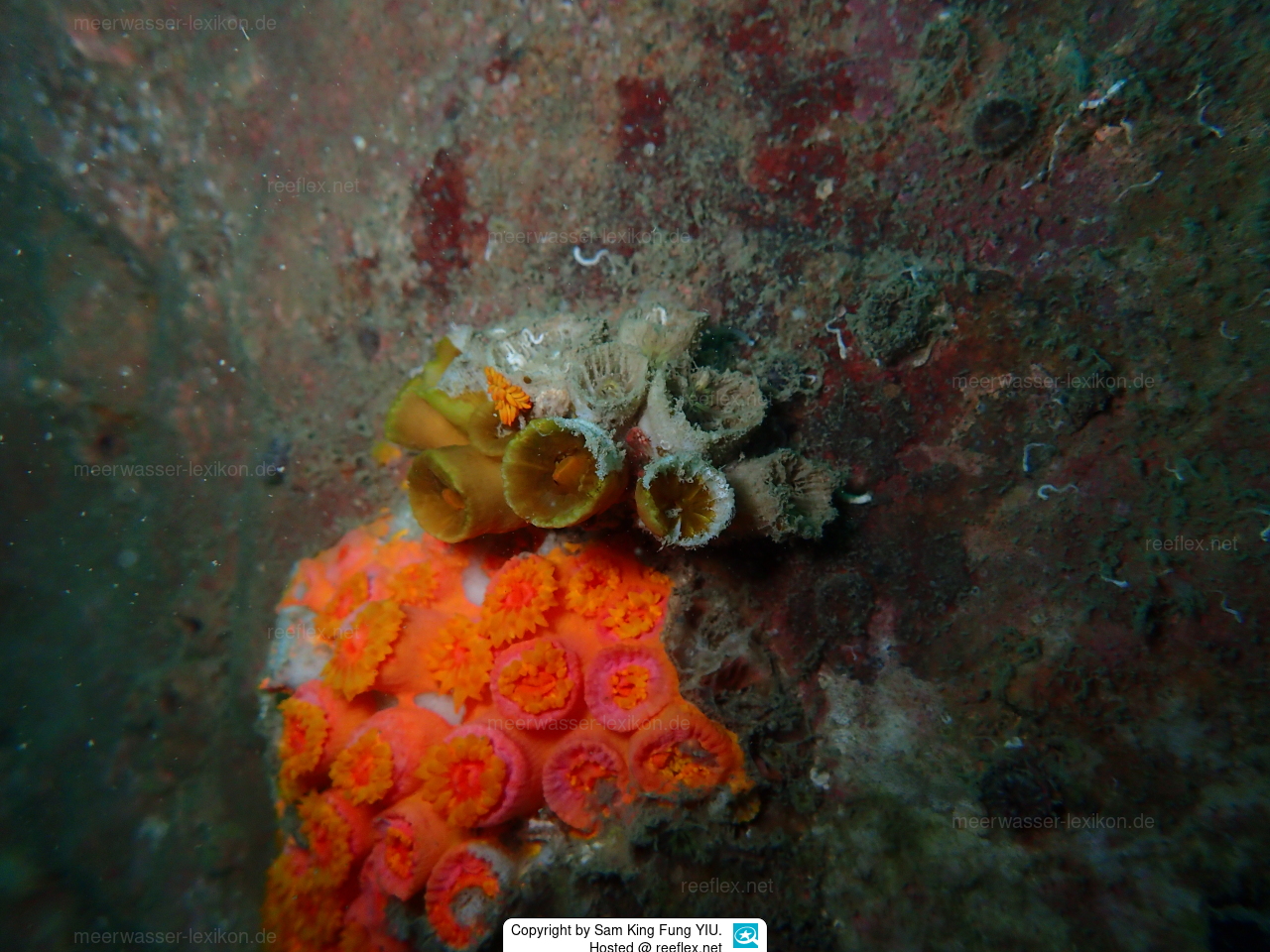Info
Tubastraea, also known as sun coral or sun polyps, is a genus of coral in the phylum Cnidaria. It is a cup coral in the family Dendrophylliidae.
An exact classification of the individual animals is only possible on the basis of the location of the mesenteries (fold of the coelom wall (mesoderm), in which the intestine is suspended in most animals (Coelomata)), but for this the coral skeleton must be examined. Alternatively, a DNA examination would have to be carried out.
Visually, the color of the coral polyp is different and in Tubastrea micrantha there is branching. The Tubastrea coral is a non-reef-forming coral.
Aquarium conditions
The coral should not be placed in direct light, and a laminar (no visible turbulence (eddies / cross currents) strong current is an advantage. Important: No direct current, otherwise this will lead to tissue damage.
Recommendation - the coral should be kept in a species tank.
Feeding
Tubastrea corals do not have zooxanthellae and do not live on light They do not harbor symbiotic algae that produce nutrients and energy via photosynthesis.
The pumps should be switched off before feeding. In order for the coral to survive in the aquarium, each individual polyp must be fed sufficiently, i.e. daily or 3 - 4 times a week. Without feeding, the coral will not survive in the aquarium. The polyps need a certain amount of time to absorb the food (granules or frozen food); if shrimps and fish are present, they will try to remove the food, so be sure to feed these inhabitants first.
Freshly inserted coral sticks can be stimulated with a liquid food, e.g. PolypLab Polyp, so that the individual polyps open. Only then can feeding be carried out.
The better the individual polyps absorb the food provided, the better the growth and reproduction rates.
The polyps take a while to become accustomed to feeding in daylight. With a long food pipette, each polyp can be fed specifically or liquid food with the pipette initially stimulates the polyps to open.
A good aid for "quiet" feeding is a feeding bell that can be placed over the coral so that fish & co. are not disturbed.
Reproduction
With good care, the number of polyps can double within 6 months.
Fragmentation is not so easy and tissue damage can lead to losses. During sexual reproduction, each individual polyp releases planula larvae, which then settle in the aquarium, where they can also cover larger areas. From there, they can then be glued to a frag.
Identifying feature
This coral has a delicate olive green skeletal wall and a circle of yellow tentacles surrounding its mouth. Hence the species was named " Chloromura ", where " chloro " and " murus " mean "green" and "wall" respectively. From coral gene sequences recorded in public databases, HKBU biologists see the potential distribution of Tubastraea dendroida and Tubastraea violacea in Japan and the western Pacific. At this time, however, Tubastraea chloromura is only known to live in Hong Kong waters.
Biologists from Hong Kong Baptist University (HKBU) have discovered three new hard coral species in Hong Kong waters that have not been identified anywhere else in the world. The new marine species were identified by Professor Qiu Jianwen and MPhil student Mr. Yiu King-fung from HKBU's Department of Biology. The descriptions of the new corals have been accepted for publication in the journal. We attach a link.
The three newly discovered sun coral species were named by the HKBU team as Tubastraea dendroida, Tubastraea chloromura and Tubastraea violacea and all belong to the genus Tubastraea . The samples were collected as the team surveyed coral-eating nudibranchs at Sung Kong and Waglan Island in the eastern waters of Hong Kong. With the discovery of three new members, the number of known species in the genus Tubastraea has increased from seven to ten.
The Tubastrea coral is currently not commercially available (12/2023).







 Sam King Fung YIU, Hong Kong
Sam King Fung YIU, Hong Kong











